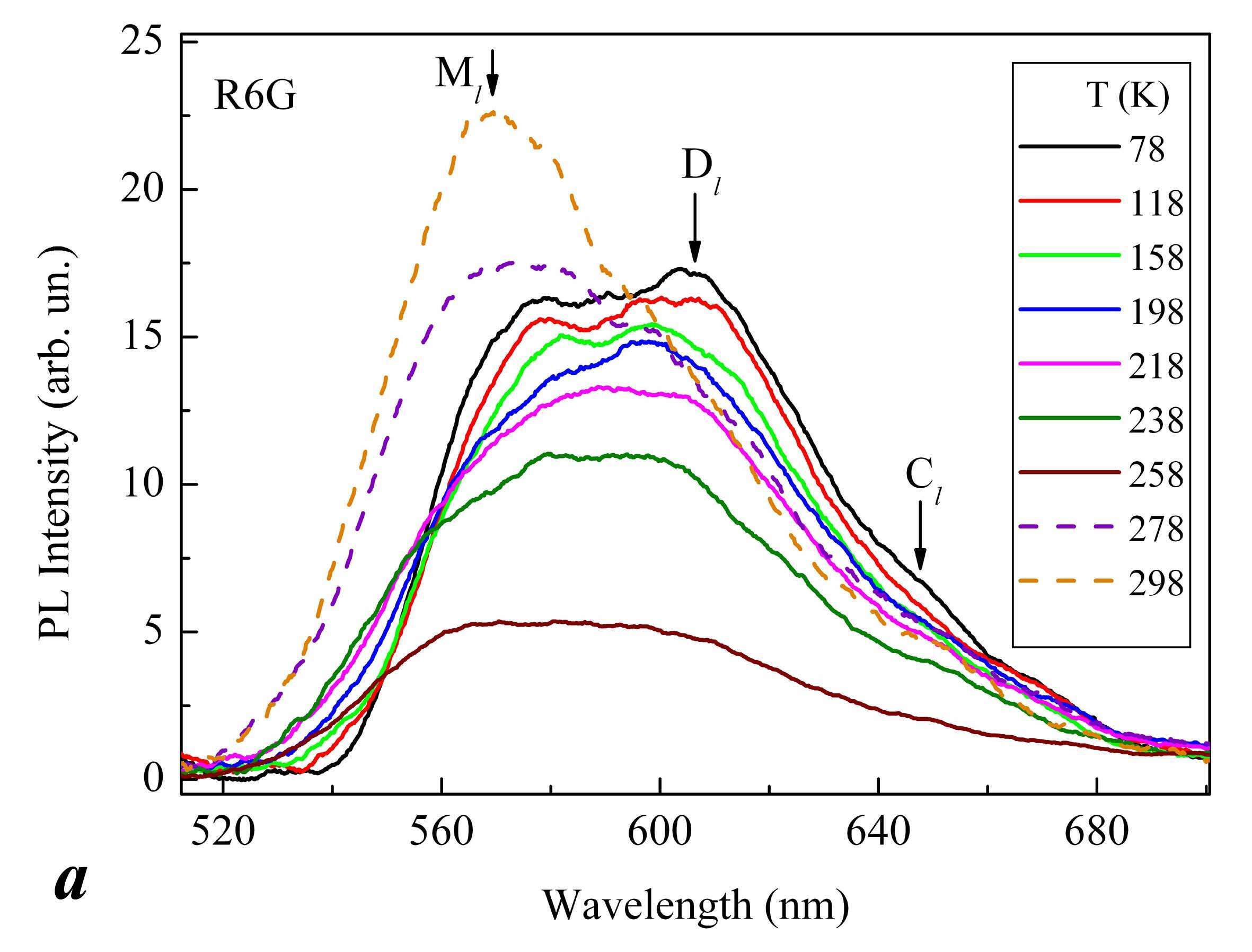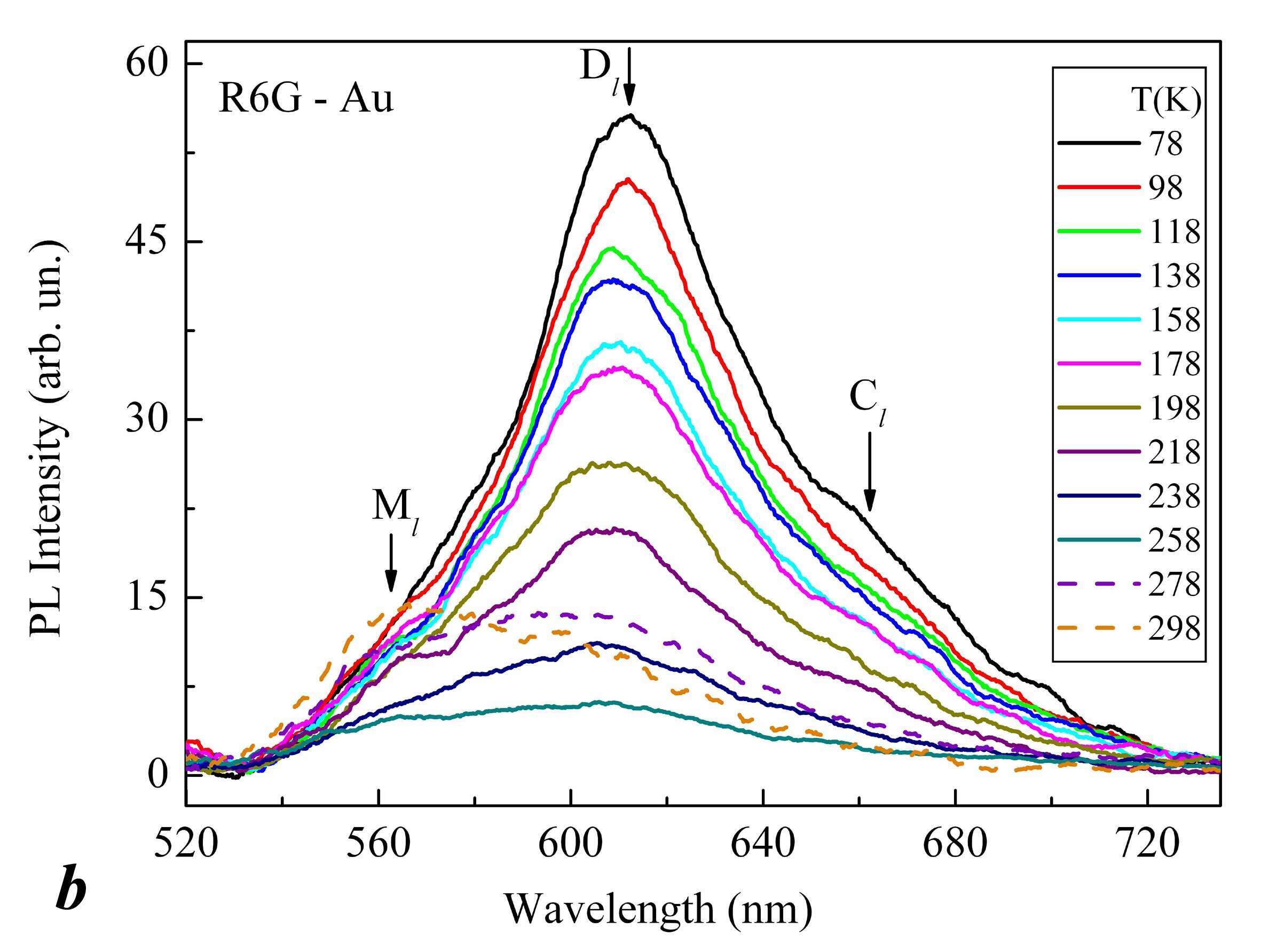
Influence of Temperature on Photoluminescence of Rhodamine 6G in Plasmonic Field of Gold Nanoparticles
The comparative study of the temperature dependence of the photoluminescence (PL) from rhodamine 6G (R6G) deposited on 2D array of gold nanoparticles (NPs) and PL from R6G without Au NPs was performed in the temperature range of 78 – 298 K. The PL from R6G on Au NPs array is enhanced by the coupling of exciting and emitted photons to the surface plasmons excited in the NPs. There is a significant difference in the temperature behavior of the PL spectra from R6G–Au and R6G samples. The ratio of PL intensity of R6G on Au to one of R6G without Au was found to be monotonically decreasing with temperature. This indicates the fact of monotonic decrease of the factor of plasmonic enhancement of PL from R6G on Au NPs with temperature. The theoretical model was proposed to explain the observed temperature dependence of plasmonic enhancement factor. Two possible physical mechanisms of the observed temperature dependence were considered. First one is the electron-phonon scattering which causes the increase of plasmonic damping constant with increase of the temperature leading to the weakening of the plasmonic enhancement. Second one is the thermal expansion of the gold NPs. The thermal expansion increases the NP size leading to decrease of the plasmonic damping caused by surface scattering of electrons and to corresponding strengthening of plasmonic enhancement. The results of theoretical calculations agree with the results of the experimental observations proving the model used. The calculations showed that the electron-phonon scattering is prevailing mechanism in the temperature dependence of the factor of plasmonic enhancement of PL from R6G on Au NPs as compared to effects related to the thermal expansion of Au NPs.


Figure 1. Evolution of PL spectrum of R6G/shellac thin film (a) and one of R6G/shellac thin film deposited on Au NPs array with monotonous increase of temperature from 78 to 298 K.
yes@univ.kiev.ua
Powered by Eventact EMS